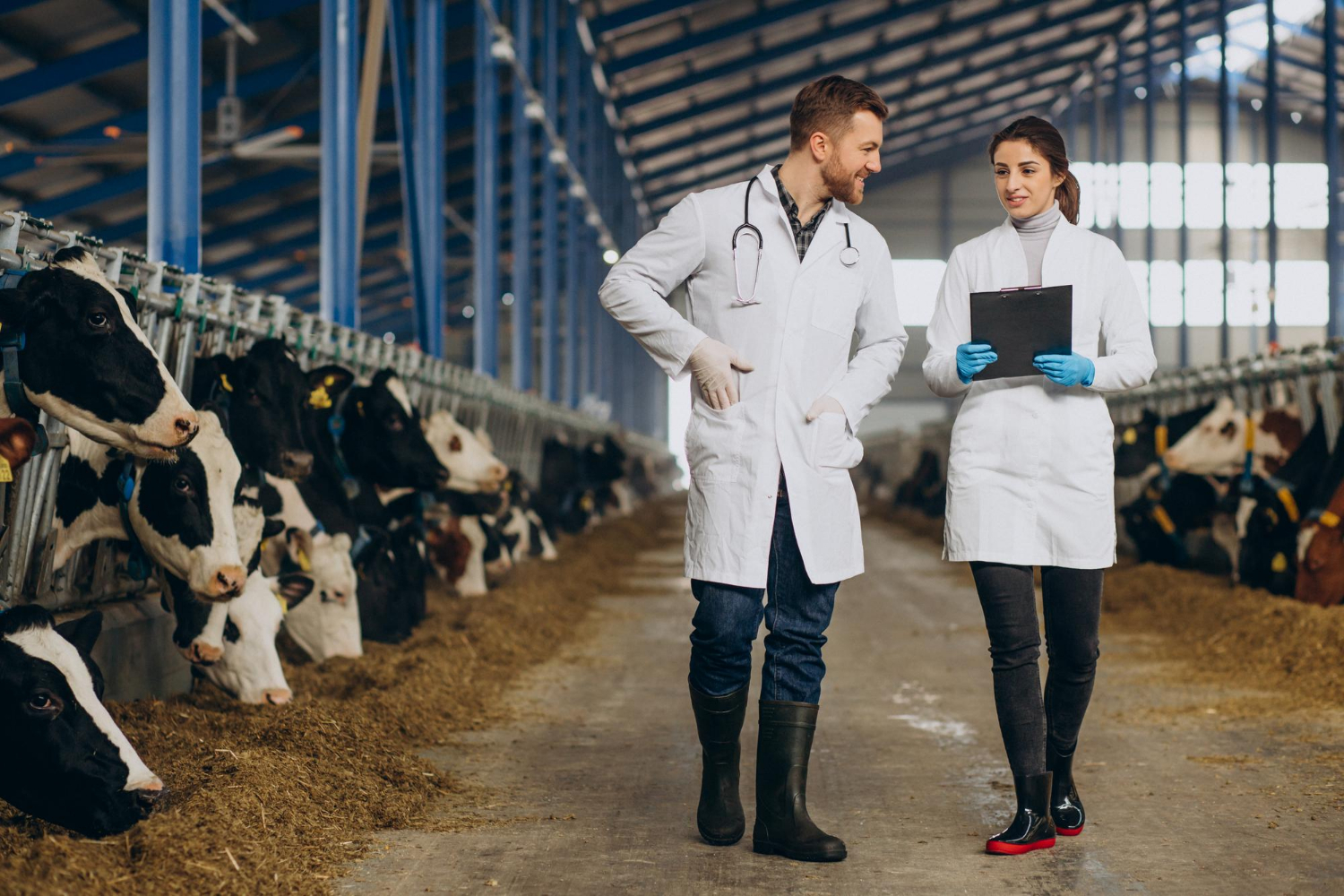In a time when the consumers demand transparency and visibility in all processes, not having a reliable traceability system may put the credibility of your beef cattle operations in question. Livestock identification and traceability systems offer cattle producers and beef processors with various benefits. With a livestock traceability system in place you can meet requirements of regulators as well as certified auditors, leading to increased value of your product in both domestic and international markets. Another prominent benefit of traceability systems is that it reduces the impact of disease outbreaks, saving the industry from huge losses and consumers from adverse effects.
What is Traceability ?
In regard to letting people know what is traceability, the International Organization for Standardization (ISO) says that it is a series of recorded identifications that allows to trace the history, location and application of a product or anything that is under consideration.
What does traceability mean from a general aspect? Well, it is the ability through which all the processes, starting from ordering the raw material to the disposal of the final product, can be traced. It is a way of tracking the date when it was produced, where was it produced and by which company. This concept has gained popularity among all industries such as food and livestock industry, automotive, pharmaceutical and even electronics. The rise of the popularity of this concept is due to wide-scale awareness of safety over the past few years.
As the livestock industry is the prime focus of this article, it is important to understand what is the meaning of traceability in this sector. Traceability in the livestock industry is the ability to identify the products livestock and poultry back to their origin. This helps in identifying the parentage, ascertain ownership, make way for transparency in food safety, assuring compliance and improving palatability.
What is Food Traceability?
Food traceability is the ability to trace all the processes involved in bringing the livestock food from the farm to fork. Through this technique, food movements can be traced at any stage of the process, be that the procurement of raw material stage, production or distributions.
What is food safety and traceability when it comes to the beef industry? Food safety is the process of eliminating or reducing the risk of a consumer getting any foodborne illnesses. It includes handling, preparing and storing the food in a way that it stays fully hygienic from the time of cattle production to the time they are slaughtered and then sold in a retail store. What is the importance of food safety with regards to the beef industry? This is where food traceability systems come into play. A food tracebility software is designed with the sole purpose of ensuring that the food being delivered to the people is perfectly safe and hygienic, fulfilling the legal requirements. It also helps saves the beef industry from huge losses in case of a disease outbreak as the exact origin of a disease can be located. Cattle producers and ranchers may also use beef record keeping software same they use cattle managment software to make sure they have complete cattle origin and health records to market their products as compliant and safe for consumers.
Components of Animal Traceability:
Livestock and animal traceability is based on three core components; Premises identification, animal identification, and animal movement. These three components combine together to improve the overall efficiency of an animal information and traceability system by reducing the response times and allowing a quick containment when trapped in a disease outbreak or a technological malfunction.
-
Premises Identification:
Premises identification is the stage of linking the livestock animal and the poultry to the geographical locations. The information gathered about the location of the animals allows the government as well as the industries to notify the respective owners if an emergency situation emerges that may affect the livestock and poultry. Places such as abattoir, assembling stations, boarding stables, meat facilities, etc must adopt this concept.
-
Animal Identification:
Similar to the premises identification, animal identification is the ability to trace individual animals or as a lot of animals. different farms are at different stages in the adoption of this concept. The industries and farms are working with regulators to implement livestock identification and traceability systems which have paved the way for different ways of identifying different species. For example, EID or RFID tags are being used by industries dealing with beef, sheep, dairy, and bison for identifying the animals individually. While the poultry and swine industries do not practice individual identification, but use methods that help in identifying lots. These differences are due to the varying production methods.
-
Animal Movement:
This phase of animal traceability allows tracking the movement of animals, through the production phase, forward and backward based on the records and the information. Animal movement tracking boasts amazing benefits, as with this technique the emergency management can be enhanced and trust of the consumers can be gained, as it ensures that quality food reaches to the consumers all around the globe.
Blockchain Food Traceability:
The blockchain is a technology based on the concept of a distributed ledger. With this technological tool, it becomes easier to track all the transactions being made. It records everything about a transaction such as when did it happen and did it happen correctly or not. Making use of the peer-to-peer consensus for the validation of transactions, this tool works just like cryptography.
In the agri-food sector, the concept of blockchain food traceability has gained pace and is revolutionizing the industry. Just simply scan the QR code, the consumers will be able to track their food from the very first stage of production. Using tools like Uniqode’s QR Code Generator, producers can easily create QR codes that link directly to detailed traceability data. Food safety is a top concern today and this technological solution is providing the consumers with the kind of satisfaction they have been asking for a very long time. It makes the food production process transparent, building customer trust. This is a major reason why every farmer and livestock industry is evaluating to adopt this technology.
The beef industry also enjoys numerous benefits from the blockchain food traceability system:
(i) It lowers the cost of the supply chain.
(ii) Assured quality and customer trust.
(iii) Transparency in import and export processes.
(iv) Time-stamped and signed records.
(v) End-to-end traceability.
(vi) Faster decision making.
(vii) Complete supply chain visibility.
Examples of Livestock Traceability Systems in Food Industry:
The livestock identification and traceability system is being adopted at a wide scale by various entities in the industry and there are some examples of traceability system in the food industry that have implemented and incorporated this system seamlessly into their processes to provide their consumers better quality products, giving them a chance to trust the industries.
One of the many examples includes the Wyoming ranchers, who have the blockchain technology in their process of production. The company says that by incorporating the blockchain technology has helped in increasing transparency, made traceability easier, has made their records immutable and has significantly improved the efficiency of the company’s production processes.
Tyson Foods is a well-reputed company that has taken the next step and has considered the incorporation of traceability system into their processing. They are planning to incorporate traceability system that will help them in tracing back the beef they are using. The purpose of the company is to provide its customers a reason to trust them by identifying the animal from which the beef has been used and making sure that the animal was raised and taken care based on specific requirements. the DNA traceback process they plan to use will provide them all that they need to tell their customers.
The top-ranked beef brand of Britain and Ireland, Certified Aberdeen-Angus Beef is also planning to adopt a traceability system. By doing so, this company hopes to become the number one beef brand in their regions! Other prominent names that have started piloting traceability systems are McDonalds and Fujitsu.
Livestock Identification and Traceability System:
Livestock identification and traceability systems provide a real-time approach to trace the livestock, poultry, and swine from farm to fork. Traceability systems have made beef traceability easier for cattle and beef producers working to establish customer trust and provide complete transparency to their customers. However, every participant in the food chain must adopt traceability system to earn consumer trust. One weak link in the chain can make all other participants fall far behind, losing their valuable customers and even the profits.
As the agribusiness is making the animal traceability an integral part of their production process, all other industries are doing the same. Industries such as automotive, pharmaceuticals and even electronics are incorporating supply chain tracebility software as well as product tracebility software, enhancing the efficiency of their business and building customer trust!
Benefits of Livestock Traceability Systems for the Beef Industry:
Traceability system brings numerous benefits to a vast number of industries but most importantly to the beef industry. With the incorporation of this technology into the livestock and food industry many issues at hand can be resolved. In a situation of an animal disease outbreak, this tool makes way from effective and immediate management as it provides data about the history and origin of the beef products. In result of this, the confidence of global as well as domestic consumers is enhanced as it provides transparency to these consumers. With Livestock traceability and identification system the operational efficiency of the industry can be improved and the product quality can be enhanced.








